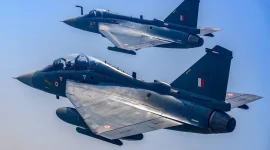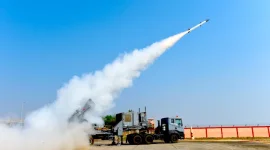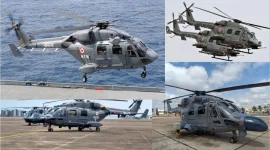- Views: 374
- Replies: 10
The Indian Air Force (IAF) is set to significantly upgrade its combat effectiveness by equipping several key fighter jets with the new BrahMos Next Generation (NG) missile.
This advanced, lighter version of the acclaimed BrahMos supersonic cruise missile will be integrated with aircraft including the MiG-29, Mirage 2000, and the domestically developed Tejas Light Combat Aircraft.
This move is anticipated to make the BrahMos NG a principal weapon in the IAF's arsenal, greatly enhancing India's ability to conduct precision air strikes.
The BrahMos NG is a product of BrahMos Aerospace, an Indo-Russian joint venture between India’s Defence Research and Development Organisation (DRDO) and Russia’s NPO Mashinostroyeniya.
Representing a notable advancement in missile technology, the NG variant weighs approximately 1.3 tonnes. This is a substantial reduction from the roughly 2.5 tonnes of the BrahMos-A, the air-launched version currently carried by the Su-30MKI fleet.
The lighter design of the BrahMos NG allows it to be deployed on a broader array of fighter aircraft, importantly including the Tejas, which is a central element of India’s efforts towards self-sufficiency in defence manufacturing.
The integration of the BrahMos NG onto the MiG-29, Mirage 2000, and Tejas aircraft will provide the IAF with enhanced operational flexibility and increased firepower.
Despite its more compact size, the missile maintains the core strengths of the original BrahMos, including its supersonic speed of up to Mach 2.8 (almost three times the speed of sound), high precision, and the ability to engage both land-based and naval targets with significant accuracy.
The capability to launch this versatile missile from various platforms will extend the IAF's operational reach, serving as a strong deterrent.
It is anticipated that the BrahMos NG will play a crucial role in reinforcing India’s strategic capabilities. As a primary deterrent weapon for the IAF, it will offer improved strike options against critical targets such as enemy command centres, naval ships, and heavily protected installations.
The missile is equipped with sophisticated guidance systems, features designed to reduce its visibility to radar (stealth characteristics), and high manoeuvrability, enabling it to overcome modern air defence systems. These attributes make it an invaluable asset in contemporary combat situations.
The process of fitting the BrahMos NG onto the MiG-29, Mirage 2000, and Tejas will necessitate some modifications to these aircraft. These changes will involve adapting the missile’s launch mechanisms and ensuring complete system compatibility.
The Tejas aircraft, in particular, is expected to benefit greatly from this upgrade, transforming the light combat aircraft into a more powerful strike platform.
This development aligns with India’s overarching goal of achieving self-reliance in the defence sector and follows the successful integration of the heavier BrahMos missile on the Su-30MKI fighters, which provided a template for air-launched cruise missile deployment within the IAF.








